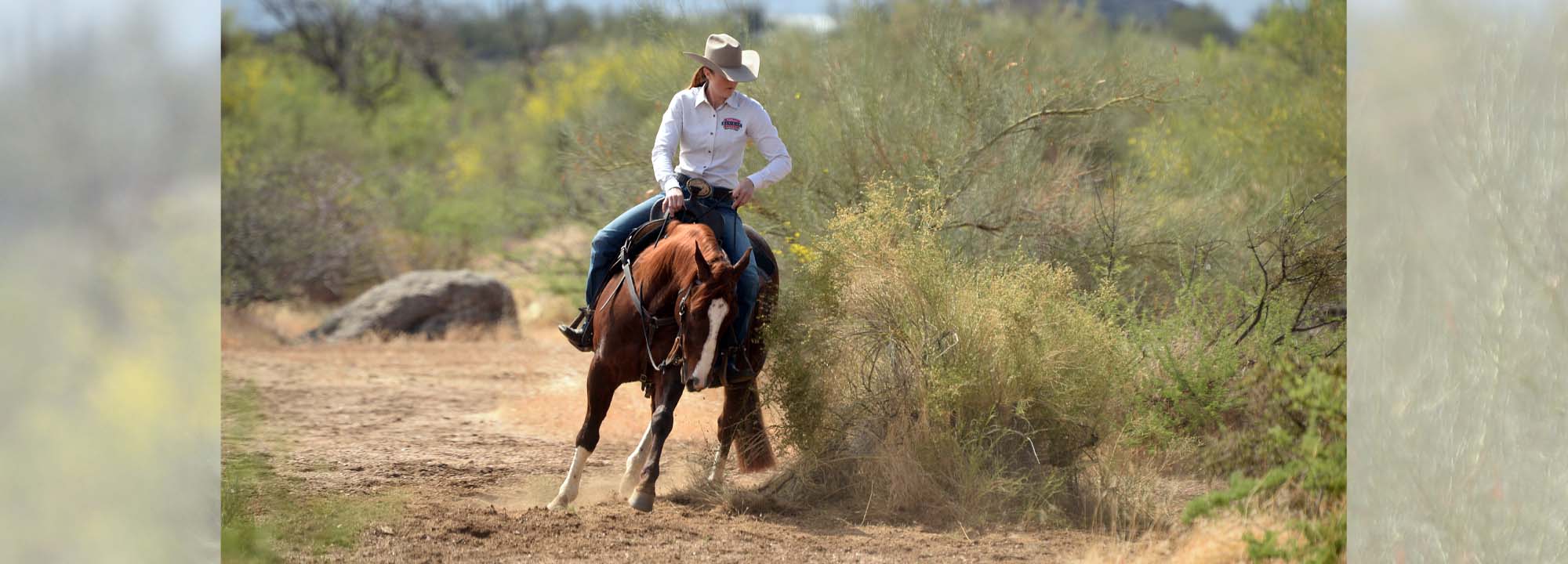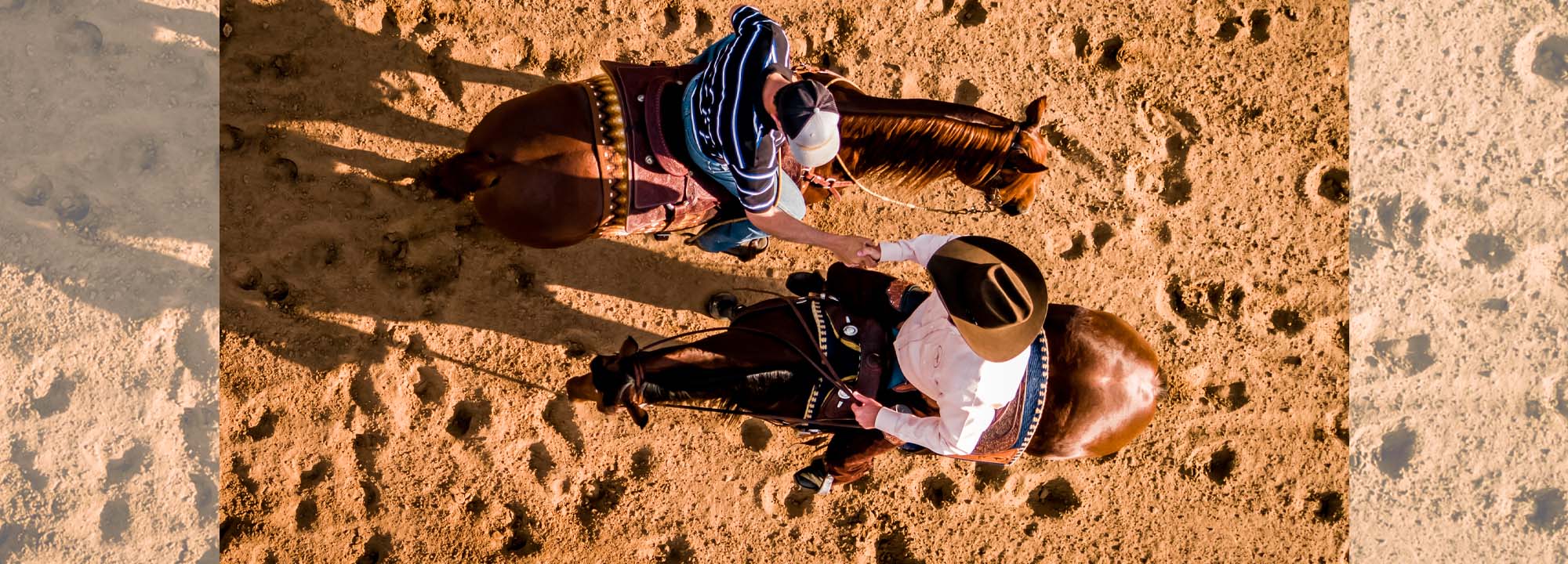Question: I have been working through the Fundamentals course. My horse obeys my commands when working in the roundpen and when we’re out on the trail alone. When I ride with someone or in a group, she gets really nervous, and at times I cannot control her. I know the answer is not to use a harsh bit, but everyone seems to want me to use a different bit. – swhite
Clinton’s Answer: It’s common for horses to ride well on the trail by themselves and get excited and ignore their riders when they’re in a group. When you get two or more horses on the trail, they have a tendency to want to race one another and get reactive. The more horses in the group, the more each horse’s prey animal tendencies come out. When you’re on a well-trained trail horse, this isn’t a problem, and it’s even fun to be on the trail in a big group. However, on an inexperienced horse, you’re just setting him up for disaster.
Personally, I don’t ride a horse with others on the trail until I’ve taken him through the entire Fundamentals Series in the arena and on the trail. At that point, I feel that I have enough respect and control of the horse and he knows how to use the thinking side of his brain on the trail so that if we did come across trouble, I’d be able to easily get his attention on me.
When I first introduce a horse to riding with other horses down the trail, I do so by riding with just one other person, who is on a well-trained trail horse. Ideally, this horse is a veteran trail mount—he’s relaxed, dependable and has no vices on the trail. The worst situation would be riding your horse on the trail with a horse that’s spooky, disrespectful, bolts, rears, snatches grass, jigs, etc. His bad behavior will rub off on your horse. You want to set your horse up for success by choosing a good role model for him. Once your horse is comfortable riding with other horses, then you can ride out with a bad-behaved horse and while that horse is a basket case or badly behaved, it won’t affect your horse because you’ve spent time teaching him to use the thinking side of his brain and have established a solid foundation of training on him.
When your horse rides well with one other horse, slowly introduce him to group riding. Before you ride in a group, your horse should be happy to follow, lead or ride beside another horse. First, ride out with three other horses. Then four, etc. Don’t go from riding your horse with one other horse to going on a 60-horse trail ride. That’d be like taking a kid from the kiddie pool and throwing him in the deepest end of the pool and wondering why he half drowns. Always keep your horse’s best interests in mind and set him up for success.
The problem you’re having with your horse isn’t that your bit isn’t big enough; it’s that you don’t have enough control of her and aren’t giving her direction. If you follow the steps I outlined to introduce her to group riding and she gets nervous on the trail and reactive, then be a leader for her and give her direction.
Ride her in a series of serpentines or hustle her feet in a few circles. Get her attention away from the other horses and back on you. When she’s settled down and focused on you, then put her on a loose rein and ride off. Any time she gets nervous, put her feet to work. That’ll work off her excess energy and show her that every time she gets nervous and tunes you out that she has to hustle her feet and sweat. It won’t take many repetitions of that for her to realize that it’s far easier to go down the trail calmly.
It basically comes down to this: If you don’t give your horse direction on the trail, she will find something to do with her energy. I guarantee what she finds to do won’t be your idea of a good time.
Have a horsemanship question or looking for more training tips? Check out the No Worries Club.





